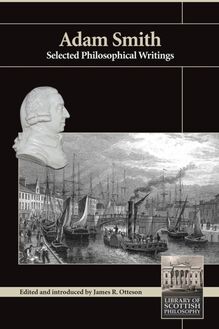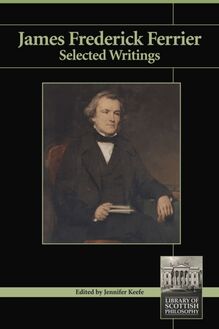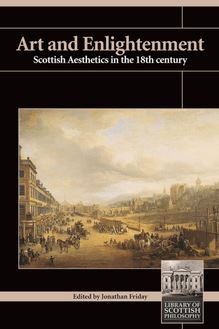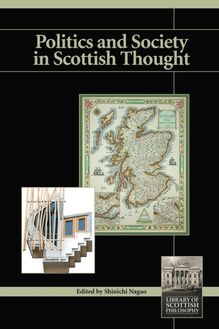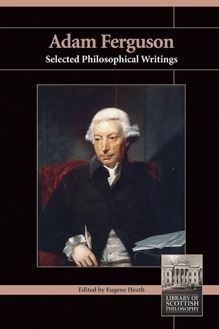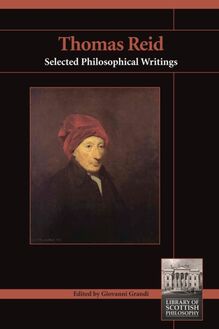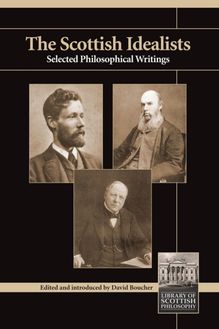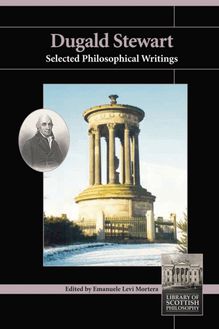Lady Mary Shepherd , livre ebook
161
pages
English
Ebooks
2019
Vous pourrez modifier la taille du texte de cet ouvrage
Obtenez un accès à la bibliothèque pour le consulter en ligne En savoir plus
Découvre YouScribe en t'inscrivant gratuitement
Découvre YouScribe en t'inscrivant gratuitement
161
pages
English
Ebooks
2019
Vous pourrez modifier la taille du texte de cet ouvrage
Obtenez un accès à la bibliothèque pour le consulter en ligne En savoir plus
Publié par
Date de parution
09 janvier 2019
Nombre de lectures
3
EAN13
9781845409999
Langue
English
Publié par
Date de parution
09 janvier 2019
Nombre de lectures
3
EAN13
9781845409999
Langue
English
Lady Mary Shepherd
Selected Writings
Edited and introduced by
Deborah Boyle
IMPRINT ACADEMIC
2018 digital version published by
Andrews UK Limited
www.andrewsuk.com
Copyright © 2018 Deborah Boyle
The moral rights of the author have been asserted. No part of this publication may be reproduced in any form without permission, except for the quotation of brief passages in criticism and discussion.
Originally published in the UK by
Imprint Academic, PO Box 200, Exeter EX5 5YX, UK
Full series details:
www.imprint-academic.com/losp
Series Editor’s Note
The principal purpose of volumes in the Library of Scottish Philosophy is not to provide scholars with accurate editions, but to make the writings of Scottish philosophers accessible to a new generation of modern readers in an attractively produced and competitively priced format. In accordance with this purpose, certain changes have been made to the original texts: Spelling and punctuation have been modernized. In some cases the selections have been given new titles. Some original footnotes and references have not been included. Some extracts have been shortened from their original length. Quotations from Greek have been transliterated, and passages in languages other than English translated, or omitted altogether.
This is the nineteenth volume in the series. It is importantly different from others for three reasons. First, Lady Mary Shepherd is the only woman philosopher represented in the Library of Scottish Philosophy , and as a woman, a rarity in the history of philosophy quite generally. Secondly, unlike all the other philosophers in the series, whose writings are well known and available in scholarly editions, this selection makes the writings it contains effectively available for the first time. Thirdly, the selection reveals a distinctively novel voice in the Scottish philosophical tradition. Shepherd truly is a discovery.
Her discovery is owed to the enthusiasm and industry of Deborah Boyle. Without Boyle’s valuable work, it seems likely that Shepherd’s contributions to Scottish philosophy would have continued to lie neglected. One hope for this volume as the last in the series is that the Library of Scottish Philosophy has opened up a completely new area for research and study.
Gordon Graham, Princeton, June 2018
Introduction
Deborah Boyle
1. Lady Mary Shepherd’s Life and Works
Lady Mary Shepherd’s writings reveal an astute and lively intellect. Her two philosophical treatises engage with the views of Hume, Berkeley, Reid, Stewart, and others, but they also present an original and carefully argued philosophical system of her own. Unfortunately, her work faded into obscurity after her death, although she seems to have been highly regarded in her day. According to a memoir written by Shepherd’s daughter Mary Elizabeth Shepherd Brandreth, geologist Charles Lyell called Shepherd an ‘unanswerable logician, in whose argument it was impossible to find loophole or flaw’, and William Whewell used one of her books as a textbook at Cambridge. [1] Shepherd’s work is discussed and praised in Robert Blakey’s nineteenth-century history of philosophy, [2] and Blakey recalled being greatly impressed, when he met her, by the ‘subtility of her mind’. [3] This collection of selections from Shepherd’s writings is intended to bring her work back into focus for students and scholars.
Mary Shepherd, née Primrose, was born at Barnbougle Castle, outside Edinburgh, in 1777. She was the second of six children of Mary Vincent and Neil Primrose, 3rd Earl of Rosebery; [4] she and her sisters were educated by a tutor at home, learning Latin, geography, mathematics, and history. [5] Her religious upbringing was most likely Presbyterian, for Brandreth reports that the Primroses’ tutor taught them Presbyterian doctrine, and historian Jennifer McRobert notes that Mary’s father, as a Scottish nobleman, would have been expected to support the local Presbyterian parish. [6] The family also spent time in London; it was probably there that Mary met barrister Henry John Shepherd, whom she married in 1808 at the relatively late age of 30. They had three children. According to Brandreth, her parents ‘gathered in those days both the scientific and the literary sides of the learned world, into easy and intimate intercourse’, with their social circle including Lyell, Whewell, Charles Babbage, Mary Somerville, Sydney Smith, Thomas Malthus, and David Ricardo. [7] Shepherd was also an acquaintance of Samuel Taylor Coleridge, who in 1833 wrote two draft poems about her, although they were not complimentary; in one, he describes her as ‘a desperate Scholar, / Like the Heavens, DEEP BLUE’, [8] linking her with the intellectual women of the Enlightenment who were pejoratively called ‘Bluestockings’.
Brandreth mentions that her mother wrote ‘metaphysical disquisitions’ about Hume and Priestley before she was married. [9] Margaret Atherton suggests that these writings are Shepherd’s 1824 Essay Upon the Relation of Cause and Effect and 1827 Essays on the Perception of an External Universe . [10] Intriguingly, however, Shepherd’s daughter contrasts the ‘manuscript metaphysical essays’ with the books, which she says ‘were written some years later’. [11] Indeed, while the 1824 book does engage with Hume, the 1827 book has only a footnote referring to Priestley, suggesting that there might have been a separate, earlier essay that engaged more extensively with Priestley. If so, however, it is as yet unknown. [12]
Shepherd’s 1824 book, An Essay Upon the Relation of Cause and Effect , argues that causal principles can be known by reason to be necessary truths. In particular, she argues that we can know through reason alone both that nothing can come to exist without a cause other than itself (which I will refer to as the Causal Principle) and that like causes necessarily have like effects (the Causal Likeness Principle). Her primary target in this book is Hume, although she also addresses the views of Thomas Brown, who had written about Hume’s causal theory in his 1805, 1806, and 1818 essays on causation, and William Lawrence, who had quoted extensively from Brown in his 1819 Lectures on Physiology, Zoology, and the Natural History of Man .
As is clear from the title of her 1827 book, Essays on the Perception of an External Universe, and Other Subjects Connected with the Doctrine of Causation , Shepherd considered it to be an extension of the earlier project on causation. Taking the 1824 essay to have established both the Causal Principle and the Causal Likeness Principle, she appeals to those principles in the first, long essay (comprising nearly half the book) to argue that we can know through reason that an external world of continually-existing objects must exist independently of us, as the causes of our sensations. Along the way, she raises objections to Thomas Reid’s account of primary and secondary qualities, Berkeley’s use of the word ‘idea’ and his comments on dreams, and Hume’s appeal to ‘vivacity’, but these are incidental remarks; her real goal is to argue for her own account of how we know that there is an external world. Her footnotes in this essay draw further connections between her views and those of Berkeley, Hume, and Reid, as well as of Dugald Stewart, Locke, Kant, James Mill, Joseph Priestley, and the French philosophers Étienne Bonnot de Condillac, Antoine Destutt de Tracy, and Joseph Marie de Gérando.
Along with the long essay on our knowledge of an external world, Essays on the Perception of an External Universe includes fourteen shorter essays, most of which take up and expand on issues mentioned only briefly in the longer essay and in the book on causation. She examines Berkeley’s idealism; criticizes Stewart and Reid on their accounts of the perception of colour and extension; discusses the role of sense organs in her account of our perception of the external world; explains how her theory distinguishes between veridical perceptions and non-veridical perceptions such as dreams; elaborates on a comparison she made in the 1824 book between reasoning about the course of nature and mathematical reasoning; discusses the nature of mind and mind–body interaction; and addresses issues of religion, including our knowledge of God, the reasonableness of belief in reports of miracles, and the preservation of personal identity in the afterlife. In the final essay, she addresses some puzzles about vision.
A year after publishing Essays on the Perception of an External Universe, and Other Subjects Connected with the Doctrine of Causation , Shepherd returned to the issue of vision, publishing a longer piece, ‘On the Causes of Single and Erect Vision’, in the scientific journal The Philosophical Magazine and Annals of Philosophy; this essay was reprinted the following month in two consecutive issues of the popular English weekly magazine The Kaleidoscope; or, Literary and Scientific Mirror . 1828 also saw the publication of Shepherd’s short essay on the writings of retired naval officer and amateur philosopher John Fearn, along with his much longer (and quite condescending) reply. Shepherd did not let Fearn have the last word; in 1832 she published her essay ‘Lady Mary Shepherd’s Metaphysics’, in which she replied to Fearn’s reply. She also indicated there that she had not written her original essay on Fearn for publication, noting that she was ‘much surprised’ to see the exchange with Fearn in print, and that her surprise ‘was accompanied by some little anxiety, from the recollection of the haste and incorrectness with which I had written a paper, really not intended for the public eye’. [13] She undertakes in her ‘Metaphysics’ to show that Fearn’
